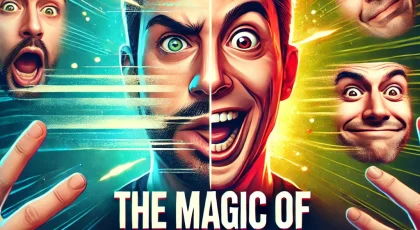Artificial intelligence (AI) is revolutionising the field of photography, offering tools and features that enhance both the creative and technical aspects of capturing images. Photo AI is making it easier than ever to take stunning photos, edit them with precision, and manage large collections of images. This guide will walk you through the essentials of Photo AI, its benefits, key applications, and how you can make the most of this technology.
What is Photo AI?
Photo AI refers to the use of artificial intelligence in various aspects of photography, from capturing and editing images to organising and sharing them. AI algorithms analyse and interpret visual data to automate tasks, improve image quality, and offer creative enhancements. This technology is accessible through AI-powered cameras, editing software, and photo management tools.
Benefits of Photo AI
- Improved Image Quality: AI algorithms can automatically adjust exposure, contrast, and colour balance, resulting in high-quality images even in challenging conditions.
- Time Efficiency: Photo AI automates time-consuming tasks like sorting, tagging, and editing, allowing photographers to focus more on creativity and less on manual work.
- Enhanced Creativity: AI-powered tools offer creative suggestions, from filters and effects to new composition techniques, helping photographers explore new styles and ideas.
- Accessibility: With user-friendly AI features, even beginners can achieve professional-looking results. Photo AI makes advanced photography techniques accessible to everyone.
Key Applications of Photo AI
- Automated Editing: AI-driven software like Adobe Photoshop and Lightroom use machine learning to offer automated editing suggestions, such as cropping, colour correction, and object removal.
- Facial and Object Recognition: AI can recognise and tag faces and objects in photos, making it easier to organise and search through large collections of images.
- Smart Composition: AI can suggest the best composition for a shot by analysing the scene and recommending adjustments to framing and focus.
- Image Enhancement: AI can enhance details, reduce noise, and sharpen images, improving overall quality without the need for extensive manual editing.
How to Use Photo AI Tools
- AI-Powered Cameras: Many modern cameras and smartphones come with built-in AI features. Explore the settings on your device to take advantage of features like scene recognition, automatic adjustments, and smart composition.
- Editing Software: Use AI-driven editing software to streamline your workflow. Tools like Adobe Sensei, Luminar AI, and ON1 Photo RAW offer a range of automated editing features that can save time and improve results.
- Photo Management: AI-powered photo management tools like Google Photos and Apple Photos use facial recognition and machine learning to organise your images. Tagging, sorting, and searching for specific photos becomes much easier with these tools.
- Creative Exploration: Experiment with AI-generated filters and effects to discover new creative possibilities. Many editing apps offer one-click transformations that can give your photos a unique look.
Tips for Maximising Photo AI
- Keep Learning: Stay updated on the latest AI features and tools in photography. Technology is constantly evolving, and new updates can offer even more capabilities.
- Combine AI with Manual Editing: While AI can handle many tasks, combining automated and manual editing can give you the best of both worlds. Use AI for quick fixes and manual adjustments for finer details.
- Experiment with Settings: Don’t be afraid to experiment with different AI settings on your camera or editing software. Finding the right balance can significantly enhance your photography.
- Backup Your Work: Always backup your photos and edits. While AI tools are reliable, having backups ensures you won’t lose your work if something goes wrong.
Ethical Considerations
As with any technology, the use of AI in photography comes with ethical considerations. It’s important to be mindful of issues such as privacy, data security, and the potential for AI-generated content to be misused. Ensure that you use AI tools responsibly and respect the rights of your subjects and fellow photographers.
Conclusion
Photo AI is transforming the world of photography, offering powerful tools that enhance both creativity and efficiency. Whether you’re a professional photographer or a hobbyist, embracing AI technology can elevate your work to new heights. By understanding the benefits and applications of Photo AI, and using it responsibly, you can make the most of this exciting technological advancement.









